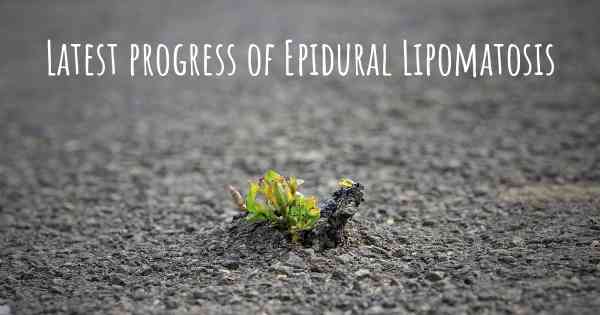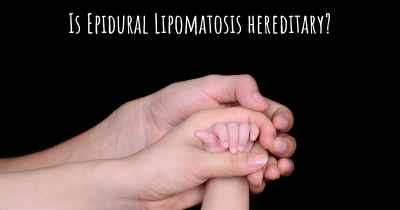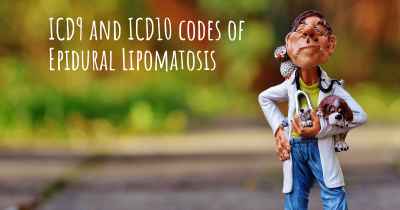What are the latest advances in Epidural Lipomatosis?
Here you can see the latest advances and discoveries made regarding Epidural Lipomatosis.

Epidural lipomatosis is a rare condition characterized by the abnormal accumulation of fat in the epidural space of the spine. This can lead to compression of the spinal cord or nerve roots, resulting in various neurological symptoms. While the exact cause of epidural lipomatosis is not fully understood, it is often associated with obesity, long-term steroid use, and certain endocrine disorders.
Recent advances in the understanding and management of epidural lipomatosis have focused on improving diagnostic techniques and exploring new treatment options. One of the key developments in this field is the utilization of advanced imaging modalities, such as magnetic resonance imaging (MRI), to accurately diagnose and assess the extent of epidural lipomatosis. MRI provides detailed visualization of the spinal canal and allows for precise measurement of the epidural fat thickness.
Early diagnosis and intervention play a crucial role in preventing further neurological complications associated with epidural lipomatosis. With the help of advanced imaging techniques, healthcare professionals can identify the condition at an early stage, enabling timely intervention. This may involve weight management strategies, discontinuation or reduction of steroid medications, or treatment of underlying endocrine disorders.
Conservative management approaches have been explored to address epidural lipomatosis in patients who are not suitable candidates for surgery or prefer non-invasive options. These approaches typically involve weight loss programs, physical therapy, and pain management techniques. Weight loss has been shown to reduce epidural fat volume and alleviate symptoms in obese individuals. Physical therapy can help improve spinal stability and relieve pressure on the affected nerves. Pain management techniques, such as epidural steroid injections, may provide temporary relief in some cases.
Surgical intervention is considered when conservative measures fail to provide adequate symptom relief or in cases of severe neurological compromise. Traditional surgical techniques involve decompression of the spinal canal by removing excess epidural fat through laminectomy or laminotomy procedures. However, these procedures carry the risk of destabilizing the spine and may require spinal fusion to maintain stability.
Recently, minimally invasive techniques have emerged as a promising alternative to traditional surgery. These techniques aim to achieve decompression while minimizing tissue damage and preserving spinal stability. One such technique is the use of endoscopic approaches, where a small incision is made and a specialized endoscope is inserted to visualize and remove excess fat. Endoscopic procedures offer the advantages of reduced postoperative pain, shorter hospital stays, and faster recovery compared to open surgery.
Research efforts are ongoing to further understand the underlying mechanisms of epidural lipomatosis and explore novel treatment options. This includes investigating the role of adipose tissue-derived factors in promoting fat accumulation in the epidural space and potential therapeutic targets to inhibit this process. Additionally, advancements in regenerative medicine, such as stem cell therapy, hold promise for promoting tissue regeneration and reducing epidural fat volume.
In conclusion, recent advances in epidural lipomatosis have focused on improving diagnostic techniques, exploring conservative management approaches, and developing minimally invasive surgical techniques. Early diagnosis and intervention, along with weight management strategies, play a crucial role in preventing further neurological complications. While surgical intervention remains an option, minimally invasive techniques offer potential benefits in terms of reduced tissue damage and faster recovery. Ongoing research aims to deepen our understanding of the condition and identify new therapeutic targets for improved management of epidural lipomatosis.








